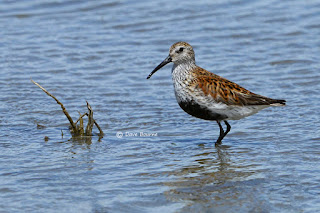On our first owl prowl to Florida, I was worried that perhaps we would dip on the Burrowing Owl. I needn’t have worried. We found dozens of owls everywhere. From parks and pastures to libraries, industrial areas, subdivisions, and in the middle of baseball fields.
Burrowing Owls are small, sandy coloured owls with long legs and bright yellow eyes.
They live in underground burrows they’ve either dug themselves or taken over from prairie dogs, ground squirrels or tortoises.
Unlike most owl species, Burrowing Owl sexes are the same size or the male is slightly larger.
They live in grasslands, deserts, and open habitats, where they hunt mainly insects and rodents.
We have been fortunate to observe not only the Florida Burrowing Owls but also the Burrowing Owls from the western side of North America in Utah and Arizona.
We had hiked all over the place looking for Burrowing Owls at this particular spot only to return and have one sitting in a tree directly over our camper.


















































